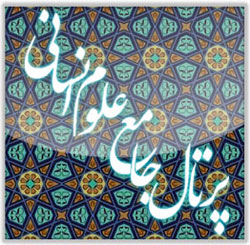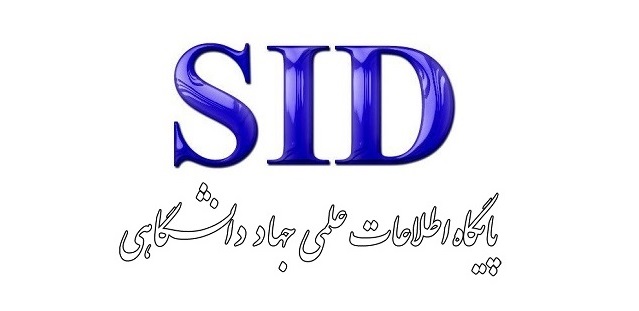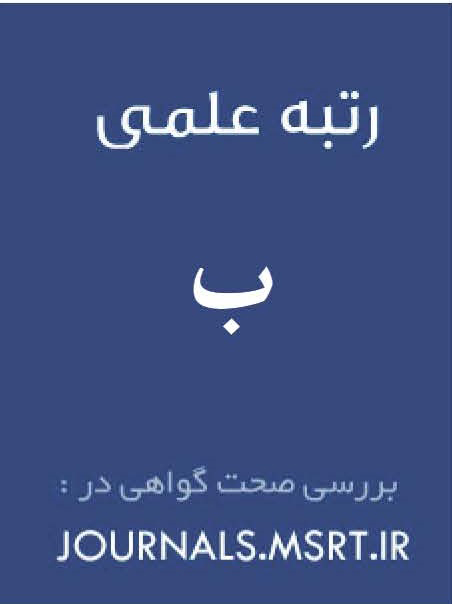Examining Characterization in Shahnameh and Its Impact on the National Identity of High School Students with an Emphasis on Upper Secondary Persian Textbooks
Keywords:
Shahnameh, characterisation, National Identity, Persian Books for the Second Intermediate Level, Moral educationAbstract
The present study was conducted with the aim of examining characterization in the Shahnameh and its impact on the national identity of students in upper secondary Persian textbooks. This study is descriptive–analytical and qualitative in nature, and by using content analysis of textbooks and the texts of the Shahnameh, the individual, ethical, social, and identity-related dimensions of the characters were analyzed. The findings showed that the characters of the Shahnameh, such as Rostam, Siavash, Kay Khosrow, and Sohrab, possess multidimensional traits, and each carries significant educational and identity-related messages for students. The representation of these characters in upper secondary Persian textbooks varies: the tenth-grade textbook focuses more on epic and tragic aspects, the eleventh-grade textbook emphasizes ethics and moral lessons, and the twelfth-grade textbook highlights rationality, pursuit of justice, and political prudence. National identity indicators such as patriotism, justice-seeking, self-sacrifice, and loyalty are strongly present in the textbooks and have a positive impact on students, although the indicators of rationality and analysis of social issues receive less attention. The study concludes that the characterization in the Shahnameh has considerable potential to strengthen national identity, foster ethical education, and promote cultural motivation in the younger generation. It also emphasizes that providing deeper analyses and complementary educational activities can enhance the effectiveness of these texts.
Downloads
References
1. Alimoradi M. The Role of Literary Texts in Strengthening Children's Identity: A New Approach in Educational Training. A New Approach to Children's Education. 2025;7(3):e227570.
2. Nematollahi A. A Rereading of the Character of Tus from a Freudian Perspective (A Freudian Reading of the Character of Tus in the Shahnameh). Bi-quarterly Journal of Contemporary Persian Fiction Criticism. 2021;7(2):123-32.
3. Masoumipour F, Farrokhfar F. An Analysis of Characterization Features in the Illustrations of the Shahnameh of Tahmasp. Negareh. 2021;16(57):45-61.
4. Yari S, Qaraei F. A Comparative Study of the Epic Characters 'Karne' and 'Sohrab' in the Mahabharata and Ferdowsi's Shahnameh. Comparative Religions and Mysticism Studies. 2024;8(2):53-78.
5. Edalat Kashi F, Ja'farieh M. A Narrative and Psychological Analysis of Six Characters from the Heroic Period of the Shahnameh. Pahlavani Literature. 2023;1(1):31-46.
6. Kalhori K, Hashemian L. An Examination of the Components of Hope in the Two Characters Gev and Kamous-e Kashani from Ferdowsi's Shahnameh Based on Snyder's Theory. Iranian Studies Journal. 2024;23(45):277-97.
7. Ghadiani M, editor A Study of the Character of Seductive Women in Ferdowsi's Shahnameh and Their Similarity to Femme Fatales in Film Noir. International Conference on Language, Literature, History, and Civilization; 2020.
8. Zaheri Abdovand E, Safari J. The Regressive Journey of the Characters Salm, Tur, and Rostam in the Shahnameh Based on McKee's Principle of Opposition. Interdisciplinary Research on Persian Language and Literature. 2022;1(1):237-55.
9. Bakhtiari M, Nikmanesh M, Faghih Malek Marzban N. Testimonialism in the Shahnameh. Kohannameh Adab-e Parsi (Ancient Journal of Persian Literature). 2022;13(1):87-122.
10. Khaledi H, Elhami S, editors. An Examination of Manifestations of Fear in Ferdowsi's Shahnameh. International Conference on Language, Literature, History, and Civilization; 2021.
11. Ali Beigi Sarahali V, Ramezani A. A Psychological Critique of Women in the Shahnameh Based on Jung's Theory (Focusing on the Characters of Gordafarid, Katayoun, and Tahmineh). Persian Language and Literature (Former Journal of the Faculty of Literature, University of Tabriz). 2021;74(244):186-216.
12. Ranjah A, Khorrami M, Khasi M, Hamidi A, editors. The Role of Academic Counseling in Promoting Student Personality. International Conference on Management Research, Education, and Training in Education; 2023.
13. Qobadi Farzan MH, Qobadi Farzan F, editors. The Influence of Teachers and Parents in Creating and Shaping Students' Desirable Personalities and Their Adaptation to Society in the Elementary School Period. National Conference on Management, Psychology, and Behavioral Sciences; 2022.
14. Amiri Farzad M, Mohammadi Mirazizi MR, Qobadi A. A Study of the Relationship Between Social Maturity, Academic Engagement, and Personality Traits in First and Second-Level High School Students. Journal of Research and Innovation in Education and Development. 2024;4(1):185-203.
15. Tanha Z, Momeni Mofrad M, Nasiri Zadeh M. The Effect of Shahnameh Reading on Aggression, Social Skills, and National Identity of Adolescents. Psychological Studies of Adolescents and Youth. 2021;2(2):70-7.
16. Sotoudeh A, Moradi S, Namdari G, editors. A Study of the Role of the Shahnameh in Culture and National Identity. International Conference on Language, Literature, History, and Civilization; 2023.
17. Davoudi Moghadam F, Yaqubi MA. Manifestations of the Shahnameh in the Literature of Resistance and National Identity of Afghanistan. Literature of Resistance. 2024;16(30):167-205.
Downloads
Published
Submitted
Revised
Accepted
Issue
Section
License
Copyright (c) 2025 دیار رفاعی

This work is licensed under a Creative Commons Attribution-NonCommercial 4.0 International License.









